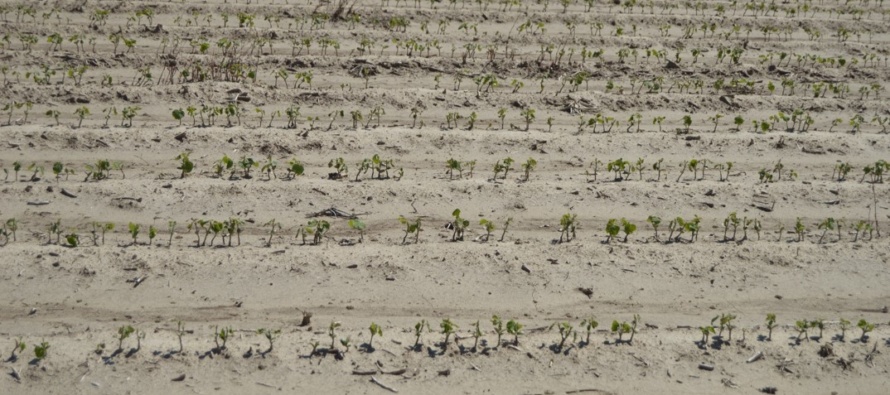Soybean Replant Decisions

Related Articles
- 2010 Soybean And Corn Variety Trial Data 3
- Rice Variety Trial Results For 2010, Plus Rice Research Report 0
- Evaluation of Peanut Varieties in Mississippi, 2010 0
Latest Tweets
To say that this planting season has been full of challenges with respect to weather conditions would be an extreme understatement. According to the USDA NASS, Mississippi soybean planting as of May 12 is only 33% complete. The reality of this estimate is that a significant portion of that completed percentage may require a replant, or at least consideration for it. We have already seen some replanting this season, but after most of the state has received several more inches last weekend with additional rain chances in the coming days, there will be some additional acres that will require a decision on how to handle the crop stand that is present.
The decision to replant or not is particularly difficult this season and can best be addressed on a field by field basis. Some acres have been under water for a significant period of time, which may require a full replant. On the other hand, some acres have emerged and are actively growing, but the final plant population may be less than optimum. Generally speaking, the first step in this decision making process is to address what total plant population is present. In other words, take stand counts from several areas within the field and calculate the estimated plant population per acre. In many cases, yield loss may not be observed for final populations ranging from 60,000 to 70,000 healthy plants per acre.
Next, determine whether or not the existing population is fairly uniform, or if there are large skips in a row or blank areas within the field. If there is a fairly uniform stand, even at the low population listed above, replanting may not be necessary. However, if there are large skips within a row or blank areas within the field, it is possible that replanting, or at least filling in these blank areas, is the best option.
Also consider the planting date of the first planting attempt. As we progress further into the planting window, yield potential for soybean does decline meaning that an earlier planting date resulting in a less than ideal population as described above may still perform better in terms of yield potential when compared to a full population achieved in a late May / early June planting date scenario. If the decision is made to stay with low plant population in the existing stand, take extra precaution to protect the plants that you have as any further loss in population may have negative impacts on yield.
Given the calendar date, there are lots of questions about what maturity group to use, regardless of whether considering a replant situation or planting the field for the first time this season. Historically, later maturing varieties have been selected for planting during this time frame and beyond. Recent research suggests, however, that planting a solid performing maturity group IV variety still holds the advantage during this current planting window. Additionally, if we are pushed even later into the planting window (planting during June), a maturity group IV variety will result in similar yields as maturity groups III or V varieties planted during this same timeframe, particularly in an irrigated system. Even if pushed into June, a late group IV provides similar yield compared to an early to mid group V but can still hold the advantage due to the fact that the shorter season variety is going to be ready for harvest earlier.




Let me tell You a sad story ! There are no comments yet, but You can be first one to comment this article.
Write a comment